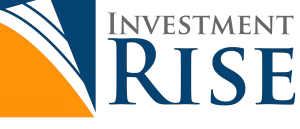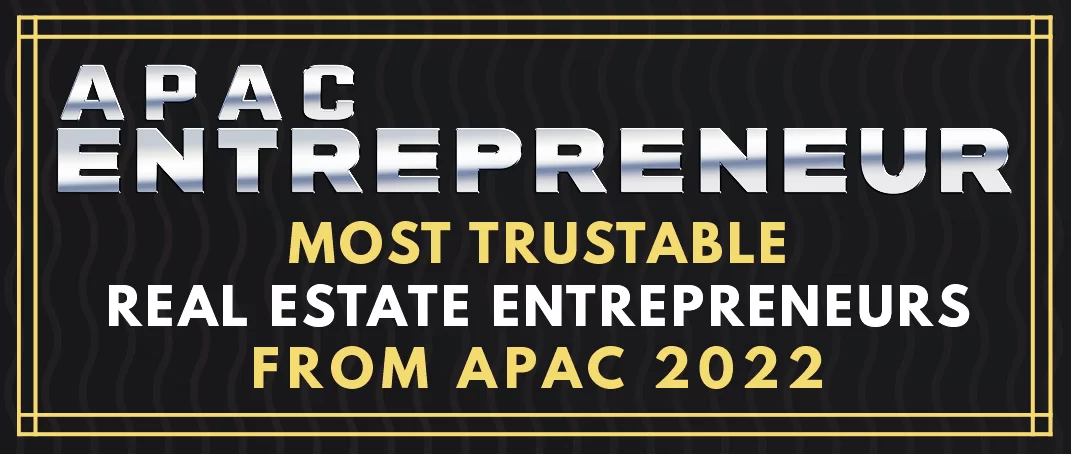How to Actually Create Passive Income With Property
By: Niro Thambipillay
October 31, 2024
The main reason why most people want to invest in property is for freedom and choice. Choice that comes from having a portfolio of properties that can pay you a passive income, whether you then choose to work or not. So, the question then is how do you go about achieving that goal? Do you focus on positive cashflow properties, or do you focus on maybe negative cashflow properties, but focus on higher capital gains?
Growth. Well, in today’s episode, I’m going to break it down for you. I’ll go through the pros and cons of each and why with where the economy’s placed right now, you could achieve both positive cashflow and higher capital growth sooner than most people have been able to in the past. Now, if you want more detail about what I’m about to go through, you can get a full blueprint in my book, Wake Up Wealthier, which you can get. The digital version and audio version totally for free when you click the link below in the description.
Now, Let me begin by giving you a harsh truth. Property investing in Australia has never been a cash flow game. It’s always been a capital growth game, at least initially. What do I mean by that? What I mean is that when buying property in Australia, it’s rarely been the case where you can get positive cash flow from day one. Instead, you want to be focusing on capital growth.
Now I know we’ve had certain periods of time when there have been exceptions. For example, when we’re talking about When interest rates were at 0.1% and say the Perth market, where you could buy properties for approximately $350,000 and they were giving you $450 a week or $500 a week in rent. Now those very same properties are selling for $600,000 or even $700,000. So, those opportunities are very few and far between interest rates have only ever been that low once in our history in Australia and that was just after the pandemic.
Hopefully we never see interest rates go that low again, because that means that we have another similar situation to the pandemic. So generally speaking, though, you have to make a choice in Australia. Do you go positive cashflow or do you go capital growth?
What you’ll see is that most investors have created wealth through property in Australia by focusing on capital growth first, not positive cash flow. Think about this for yourself. With right now, with where interest rates are, and with where the economy is, where do you need to buy property in order to get positive cash flow?
You’ll be going to rural locations. I’m not talking large regional centres. No, I’m talking smaller rural towns where they may have a pub. They probably won’t even have a local hospital. They won’t have much infrastructure. There may be some surrounding projects. So, you might be getting positive cashflow.
For example, certain smaller mining towns where they may have one or two mines. So, you might get positive cashflow in the short term. But then, what happens if those minds close? If those projects close? People leave those areas and what was once a positive cashflow investment becomes not just a negative cashflow investment, but it becomes an investment that you can’t sell because nobody wants to buy a property in those smaller rural areas when you can’t get positive cash flow.
So, in many ways focusing on positive cashflow right now is actually much riskier than focusing on capital growth. Plus, let me ask you, what would make a bigger difference to your financial situation? Having a property that might give you, say, $200 a week in positive cash flow, that’s $10 grand extra a year, or buying a property that’s likely to be worth $100,000 more in 12 months or 18 months.
Me, personally, I would take the property that’s going to rise in value by $100,000 or more in, say, 12 or 18 months. Why? Because it gives me so many more options. You see, you can buy a property, have it rise in value and then take the equity from that property and go on by a second property.
You see a big mistake. So many property investors make is they think that property investing is a one-time event, like buying a lottery ticket. You need to buy the perfect property, and it needs to do all the legwork for you. But through my 22 year investing experience, what I’ve learned. What I mean by that is that property investing is a journey.
You need to be looking at properties as stepping stones. Each property is a stepping stone to the next one and the next one. That’s how you end up building a portfolio, but then you might be wondering, okay, that all sounds great, Niro but If I have properties that are each negatively cash flowed, how do I create passive income?
How do I actually have financial freedom by having assets that are paying me an income if each property is costing me money each and every month. And this is where most people get it wrong. They see so many of these Americans who come to Australia and say, you focus on positive cashflow, you buy blocks of apartment, you buy things as better yields, and they just focus on cashflow.
You see American and Australia we’re two totally different countries. Our population is a fraction of the population in America and the banking system, the lending rules, the rules around renting are all very, very different. So, we cannot apply what works in America and say, we should do the same thing here in Australia.
As I said, property investing in Australia is a capital growth game. initially. So what we’re looking to do is buy properties that have a strong chance of rising in value. That will give you the equity growth that I mentioned earlier on. But it also gives you something else. You see, because when you buy a property in an area that rises in value, the first thing is that it’s rising in value because there is more demand in that area from owner occupiers, people who are moving into the area to buy and live, than there are supply of available properties.
So as more owner occupiers move in, buy properties, take them off the market, that means that there are fewer rental properties. Available in those areas. What happens, though, when more owner occupiers move into an area? Generally, the area improves. It has more infrastructure, more facilities, so tenants want to live there as well. What you’ll see, therefore, is tenant demand increase as well.
So now you’ve got more demand from tenants, but fewer rental properties available. What does that do to rents? It increases your rents. So, therefore your negative cash flow decreases over time. Let me give you an example. Here’s a property that we purchased for a client in April of 2023.
The purchase price was $549,000 and the rent at the time was $500 a week. So not a bad yield, but definitely not positive cashflow. Then in August of this year, 16 months later, this client went and got a bank valuation, and that same property was worth $740,000. That’s a whopping $191,000 increase in capital growth, but also his rent have gone up from $500 a week in rent $650 a week in rent.
So, he literally now has the equivalent of having purchased a property at $549,000. That’s giving him $650 a week in rent. It’s not costing him anything to hold. Despite interest rates being at the highest they’ve ever been at. And these are the kinds of properties you want to be buying properties in high growth areas that rise in value over time.
And the rents rise as well. So that you end up in a situation where the property ends up costing you nothing. It may even give you a slight positive income. Meanwhile, you’ve got all this extra equity, which you can then use to buy another property. property and build your portfolio. As you continue to build your portfolio, you might end up with three, four, five properties.
Then you might say, look, we need to improve our cashflow. Well, in that case, you could always sell one or two, for example, pay down the debts on the remainder, and that will definitely improve your positive cashflow. You see, you can definitely create passive income through property in Australia, but it actually comes from focusing not on positive cashflow properties.
It’s not a direct route to getting passive income through property in Australia. It’s an indirect route. You focus instead on capital growth properties because that’s, what’s going to give you that long term financial security that you’re looking for. So then let me make this practical. How do you start?
The first step is you work out how much negative cashflow can you afford on a monthly basis? Is it $1,000 a month? Is it $2,000 a month? Whatever the case happens to be, you need to know what’s comfortable for you. Then you need to then look at finding properties in high growth areas that matches that cashflow.
I see a lot of people who tell me, Niro, I only want to buy property that’s $400,000 or $600,000. And when I delve a bit deeper, it becomes very clear that that price point is actually quite arbitrary. It’s because they’re scared about what would happen if they can’t get their property rented. They haven’t done their cash flow numbers correctly and they don’t know what’s actually affordable for them.
For example, there are multiple areas around Australia where you could buy property for say $700,000 and the negative cash flow on that will actually be less than if you bought a property for $550,000. Plus, the capital growth prospects are likely to be better as well. So then what’s more affordable, the $700,000 property or the $550,000 property?
In this example, it would be the $700,000 property because affordability comes down to what it costs you on a month-by-month basis. So get cashflow first, then work out, okay, well, what does that translate into? into in terms of what price point and rental returns you should be looking at, then target areas where demand from owner occupiers is higher than supply target areas where rental demand is higher than supply target areas where there’s good economic diversity, strong jobs, growth and a growing economy.
And then as your property rises in value, be ready to then take out the equity and rinse and repeat the process. Now here’s why. You could actually achieve positive cash flow and capital growth faster than many people have in the past. You see, interest rates right now are at the highest they’ve been at for over a decade.
Yet inflation is starting to fall, and most lenders are expecting the RBA to cut rates from around February next year. Now, what will happen when interest rates fall? Two things. Number one, your cashflow improves very quickly. Why? Because when the RBA reduces rates and then the banks pass on, hopefully the full rate cut, but at least a portion of the rate cut, it will bring down your expenses, improving your cashflow, because interest costs are some of the biggest expenses associated with buying and holding an investment property.
Secondly, So, what you’ll find is that when interest rates fall, people’s borrowing capacities increase. And as I’ve spoken about previously, we have a massive shortage of properties in multiple locations around Australia. So therefore, when interest rates fall, people’s borrowing capacities increase, demand increases.
increases and when we already have supply shortages and now demand increases, what will that do? That will put more upwards pressure on property prices. So therefore if you’re able to afford a property and get started on your investing journey now, you could find that within a few short months your cashflow is improving and And your property starting to rise in value much faster than you expected, which means you can accelerate and kickstart your property, investing goals, maybe make up for some lost time and missed opportunity in the past, or reach those goals faster.
If you want more detail about how to build a property portfolio that pays you a passive income over time, check out the link in the description to get the audio version and digital version of my book here. Otherwise, I’ll see you next time.
Want Niro’s help to find an investment property? Find out more here 👇
https://www.investmentrise.com.au/property-buyers-agent-service/
Financial disclaimer: I am not your financial advisor and the opinions I share in this video are purely my opinions. This is not to be considered personal advice as it is general in nature.



